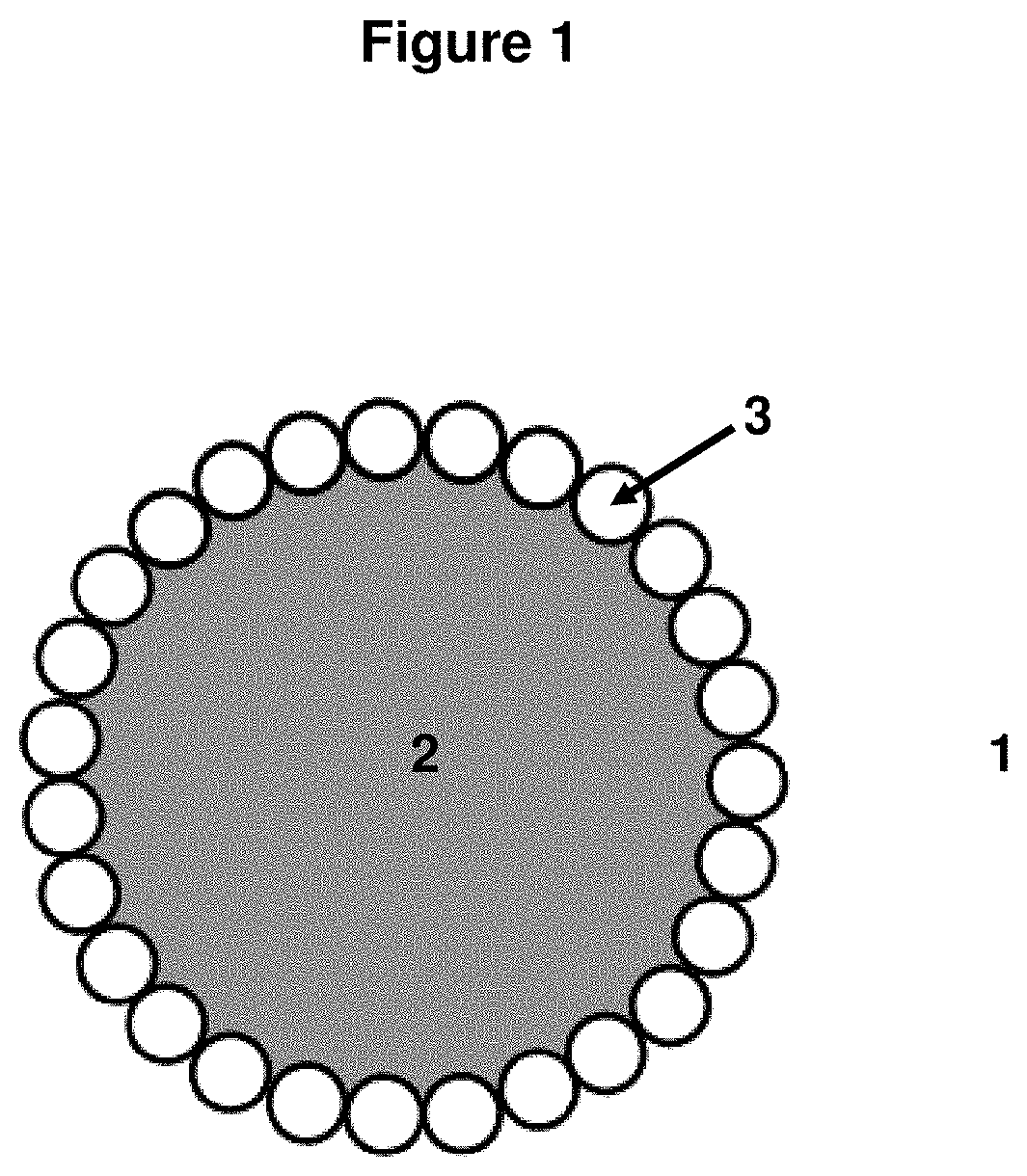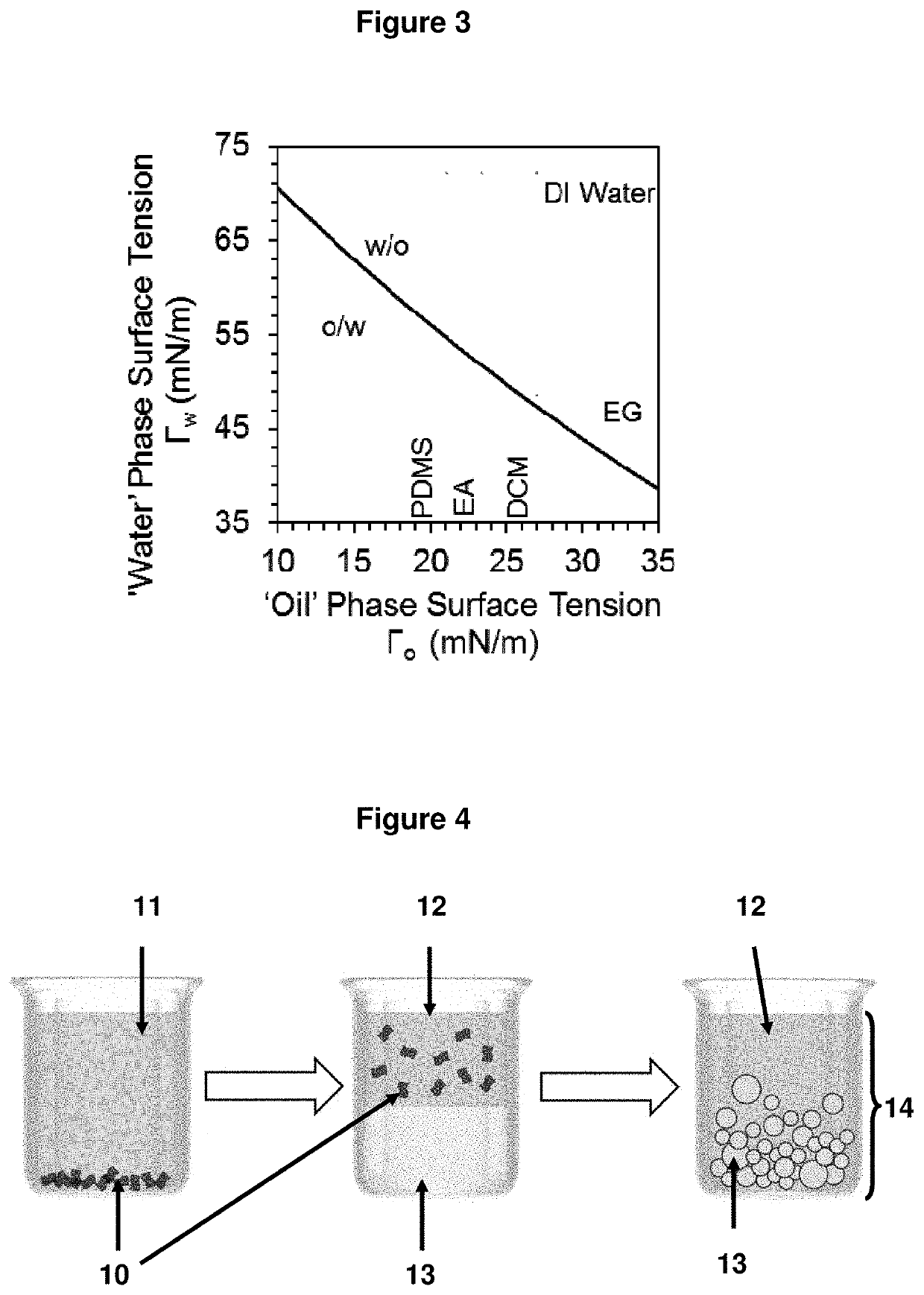Composite materials made from pickering emulsions
- Summary
- Abstract
- Description
- Claims
- Application Information
AI Technical Summary
Benefits of technology
Problems solved by technology
Method used
Image
Examples
examples
Materials
[0287]A two-component product (QSIL 216) containing PDMS and a platinum curing agent was purchased from Farnell UK.
[0288]Graphene powder (CAS: 1034343-98-0) was purchased from Thomas Swan & Co. Ltd. (Elicarb Premium Grade Graphene Powder).
[0289]Dichloromethane, ethyl acetate, and ethylene glycol were purchased from Sigma Aldrich.
Reference Example 1—Formation of a Pickering Emulsion
[0290]22 mg of graphene powder was sonicated in 4.98 g (3.76 mL) of dichloromethane (DCM) at or below 10° C. for one hour to disperse the graphene in the DCM.
[0291]Separately, 2 mL of QSIL 216 (containing PDMS (1.75 g) and a curing agent (0.175 g) in a 10:1 weight ratio) was mixed with 2.02 g (2.24 mL) of ethyl acetate (EA).
[0292]The DCM containing the graphene particles was then added to the mixture of PDMS, curing agent and ethyl acetate and homogenised via vigorous shaking for 30 seconds. The total volume of the mixture formed was 8 mL.
[0293]13.36 g (12 mL) of ethylene glycol was then added, su...
reference example 2
Particles
[0295]The Pickering emulsions formed in Example 1 were re-homogenised via shaking for 30 seconds and pipetted into glass petri-dishes.
[0296]Petri-dishes containing the emulsions were placed in an oven at 30° C. for 1 hour before raising the temperature by 10° C. every hour until 70° C. was reached and subsequently maintained overnight.
[0297]A SEM image of filler particles formed by this method are shown in FIG. 6.
example 3
of a Composite Film
[0298]The Pickering emulsions formed in Example 1 were allowed to stand for 95 days in sealed containers before being re-homogenised via shaking for 30 seconds and pipetted into glass petri-dishes.
[0299]Petri-dishes containing the emulsions were placed in an oven at 30° C. for 1 hour before raising the temperature by 10° C. every hour until 70° C. was reached and subsequently maintained overnight.
[0300]A SEM image of a composite film formed by this method is shown in FIG. 5.
PUM
| Property | Measurement | Unit |
|---|---|---|
| Temperature | aaaaa | aaaaa |
| Temperature | aaaaa | aaaaa |
| Time | aaaaa | aaaaa |
Abstract
Description
Claims
Application Information
 Login to View More
Login to View More - R&D Engineer
- R&D Manager
- IP Professional
- Industry Leading Data Capabilities
- Powerful AI technology
- Patent DNA Extraction
Browse by: Latest US Patents, China's latest patents, Technical Efficacy Thesaurus, Application Domain, Technology Topic, Popular Technical Reports.
© 2024 PatSnap. All rights reserved.Legal|Privacy policy|Modern Slavery Act Transparency Statement|Sitemap|About US| Contact US: help@patsnap.com










